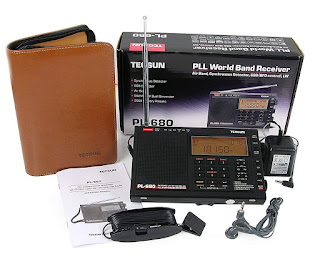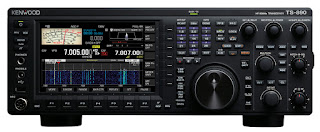Come hell or high water, on Saturday I'll be over at Anglezarke near Chorley playing radio. The forecast isn't too good on account of "Storm Jorge", but if I keep abandoning trips out because of bad forecasts, I'll be 101 yrs old before the next outing.
Anglezarke is a local beauty spot about 5 miles from my home and is very easy to reach by car, with good parking for about 10 cars. It has a fabulous take-off out to the West, so it's good for Transatlantic DX and it's also good for South-West towards Wales.
The great thing about Anglezarke is that your spouse can also tag along and enjoy a bit of a picnic, beautiful views and maybe a couple of hours reading - all without having to climb a single hillside :-)
Once you're set up, you have open space and the Irish Sea in front of you but behind are the hills of the West Pennines and Winter Hill. The height of this spot is about 150M ASL as opposed to Winter Hill's 450M, so it's quite a bit lower down, but it's a lovely spot to work from. I'll be working mainly on 20M & 40M QRP frequencies 7.090MHz & 14.285MHz unless they're occupied by contesters! I will also try to get some 2M contacts into Wales and the Isle of Man if possible.
Listen out for me - and please - confirm QSO's.
I add every contact to my QRZ Log and I send
every contact a card through eQSL.
YAESU FT-818ND
LDG Z-817 ATU
LDG Z-817 ATU
SOTABEAMS BANDHOPPER II 20/40
SOTABEAMS 7000HDS MAST
SOTABEAMS SPEECH COMPRESSOR
SOTABEAMS 7000HDS MAST
SOTABEAMS SPEECH COMPRESSOR
DIAMOND X-30 VHF/UHF
FLIGHTMAX ZIPPY 8Ah LifePO
=============================
UPDATE!
I arrived at Anglezarke around 10:15am and started to setup the SotaBeams 20/40 Linked Dipole with the fibreglass mast from the same company. I absolutely love this combo - the antenna just works everytime and it's very simple to erect and dismantle. Being resonant, a tuner is not required, but I always use my little LDG Z-817 ATU to get the perfect match across the bands. The telescopic mast is also a great accessory and saves you looking for trees!
The grass was MUCH wetter than I anticipated and within seconds I was covered in mud LOL. Mind you, it has been raining for the last two months!
Once the wire was erected, I connected the 6W FT-818ND to it from within the car (it was freezing cold) and tuned to 20M. The floor noise was incredibly low which was fantastic BUT the band was riddled with contesters - I struggled to find a free frequency to call CQ.
In the end, I gave up looking for a chinwag and decided to respond to some of the contesters. There were simply too many people shouting out and many of them were not following any sort of code of conduct! Eventually though, I managed to find some breaks and got through.
I feel that the SotaBeams Speech Compressor made a real difference. When you're struggling to be heard at QRP levels, this handy little device can make the difference between getting a contact in the log and getting hoarse, lol. If you've got an 817, 818, 857 or 897 I'd strongly recommend buying one of these - they're incredibly good value for money.
I started off at 10:40am with a guy from Norfolk (South East England) and then proceeded to swap Grid Locators with operators in Russia, USA (California!), Bulgaria, Romania and Croatia. Most of my contacts were Russian.
After a couple of hours I switched to 2M but then noticed the weather pulling in fast and made the wise decision to pull the antenna down. Minutes later it was lashing down with sleety rain. So it was only a short day out. Still, it was good fun while it lasted. Shame the competition flooded the bands and prevented normal chit-chat. Martin (K2TRD) came onto a contesting frequency but I had no chance to speak with him because it wasn't my frequency.
Back home now, warm and dry. Ready to go into the shack for the rest of the day :-)
 |
| View from the truck - nice and warm :-) |
 |
| A couple of pages from the log |








































